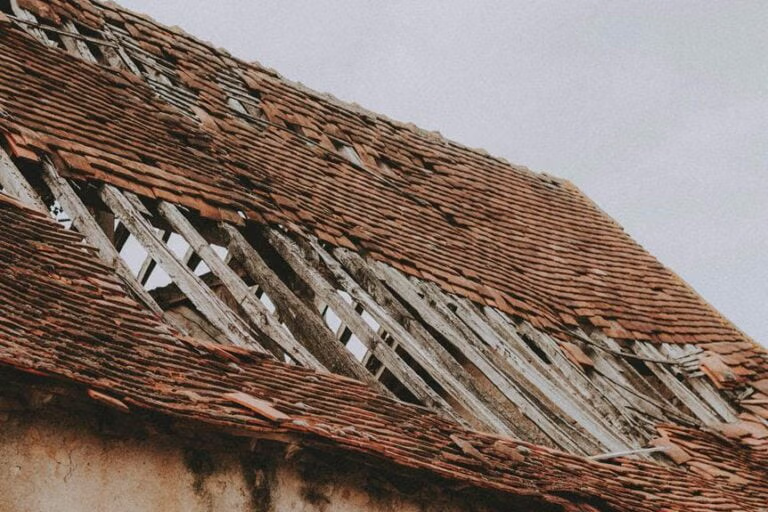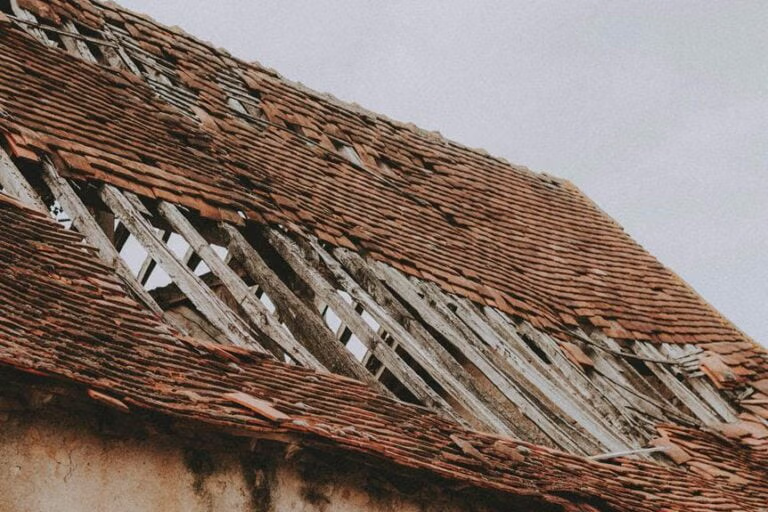The cost of roofing tiles is mainly influenced by the material used—clay, concrete, or slate—with clay and slate generally being pricier due to their durability and aesthetic qualities, while concrete is more wallet-friendly. Installation costs also play a substantial role and vary depending on the intricacy of the roof and local labor rates.
Furthermore, market dynamics and geographic availability can affect overall prices. It is crucial to balance these factors with the anticipated longevity and maintenance needs of the tiles to guarantee cost-effectiveness. Delving into more detailed information can offer deeper insights into maximizing your roofing investment.
Roofing Tile Costs and ConsiderationsKey Takeaways
- Roofing tiles vary in cost, with clay and slate being premium options, while concrete is more budget-friendly.
- Average installation costs depend on roof complexity, location, and labor rates.
- Quality and geographic location influence the overall price of roofing tiles due to material costs and availability.
- Cost comparisons between different types of tiles are essential for budget management and project planning.
- Long-term maintenance and repair expenses should be considered when evaluating the total cost of roofing tiles.
Types of Roofing Tiles
Roofing tiles, integral components in building aesthetics and protection, are mainly made from materials such as clay, concrete, and slate. Each type offers unique benefits, catering to diverse aesthetic preferences and functional requirements. Clay tiles are celebrated for their color longevity and exceptional weather resistance, making them ideal for regions prone to harsh weather conditions. They also provide excellent thermal properties, enhancing a building’s energy efficiency.
Concrete tiles offer remarkable design flexibility, available in a myriad of shapes and textures that can mimic other roofing materials like wood shakes or slate. This versatility allows for freedom in architectural expression, supporting a variety of design aesthetics from traditional to contemporary. Concrete tiles are also energy efficient, contributing to reduced heating and cooling costs due to their inherent ability to regulate indoor temperatures.
Slate, being a natural stone, brings a distinct elegance to structures, with each tile uniquely textured. It boasts superior durability and a lifespan that can surpass a century if properly maintained. Slate’s natural color variation adds unique character to roofing, while its density provides excellent insulation properties, again enhancing a building’s energy efficiency. Together, these options offer a robust palette for architects and homeowners to achieve both performance and style.
Average Cost Breakdown
Understanding the average cost of roofing tiles requires a detailed analysis of materials, labor, and additional overheads associated with installation. When considering a new roofing project, homeowners and contractors alike focus on balancing quality with cost-effectiveness. Roofing tile selection and price comparison play pivotal roles in this process, as the market offers a wide range of materials each with unique properties and pricing structures.
- Material Costs: The choice of material greatly impacts the price. Clay and slate are premium options, while concrete tiles are more budget-friendly alternatives.
- Quality of Tiles: Higher quality tiles might be more expensive upfront but can offer greater durability and longer warranty periods, potentially saving money in the long run.
- Geographic Location: Material costs and availability can vary significantly depending on the region, influencing the overall expenses.
- Market Trends: Prices can fluctuate based on demand, availability of raw materials, and economic factors. Staying informed on market trends can help in making cost-effective purchasing decisions.
Installation Expenses
Understanding the installation expenses for roofing tiles requires a detailed analysis of cost breakdown and labor charges. The overall expenses can vary notably based on factors such as the complexity of the roof design and the geographic location of the property. A thorough examination of these cost components will equip property owners with the necessary information to budget effectively for their roofing projects.
Cost Breakdown
A substantial portion of the total expenses for roofing tiles stems from installation costs, which vary depending on factors such as labor rates, roof intricacy, and geographic location. Understanding these costs is vital for homeowners and developers who aim to make informed decisions while balancing budget planning and aesthetic or functional preferences in roofing tile selection.
To navigate these expenses effectively, engaging in comparing roofing tile prices and exploring cost-saving strategies is necessary. This approach not only ensures that you stay within your financial boundaries but also allows you to make choices that do not compromise on quality and durability. Here are some key aspects to take into account:
- Material Costs: Different types of tiles come with varying price tags. Thorough research and comparison are essential.
- Roof Design and Complexity: Complex designs increase the installation time and costs.
- Geographic Factors: Local economic conditions impact labor rates significantly.
- Future Maintenance Costs: Investing a bit more in quality can reduce long-term maintenance expenses.
Labor Charges Analysis
Labor charges for roofing tile installation have a profound impact on the overall project cost and vary widely based on several factors, including the complexity of the roof design and the geographical location of the property. The installation process, an essential component of labor costs, demands skilled craftsmanship, especially when dealing with high-end material options. Intricate roof designs and the necessity for special equipment can significantly escalate labor charges.
The choice of material also influences the labor costs. For example, lightweight tiles might be cheaper to install compared to heavier slate tiles, which require more time and specialized skills, thereby increasing labor expenses. It’s crucial for property owners to engage in cost comparisons not only for the tiles but for the entire installation process. This comparison should ideally encompass all aspects of labor, including preparation work, actual tile laying, and the finishing touches.
Furthermore, geographical variability plays a crucial role. Labor costs can vary considerably from one region to another due to local economic conditions, availability of skilled labor, and even the cost of living. Understanding these factors allows homeowners to budget more effectively, ensuring that they can manage their finances without compromising on quality or aesthetic appeal.
Durability and Longevity
The durability ofroofing tiles is greatly influenced by the material strength, which varies widely among options like clay, concrete, and slate. The lifespan of these tiles can far surpass that of other roofing materials, often lasting 50 years or more with proper installation and conditions. Regular maintenance also plays an essential role in extending the longevity of a roof, preventing issues that could lead to early deterioration.
Tile Material Strength
Several factors contribute to the strength, durability, and longevity of roofing tiles, including material composition and manufacturing processes. An essential aspect is the quality of the material used, which directly impacts the longevity and performance of the tiles. High-quality materials resist environmental stressors such as sun exposure, rain, and temperature fluctuations, thereby maintaining their structural integrity over time.
In the context of real estate, the impact of roofing material on aesthetics cannot be overstated. Aesthetic appeal contributes significantly to a home’s curb appeal and can influence the resale value. Roofing tiles made from superior materials not only last longer but also retain their color and texture, enhancing the overall look of the property.
- Material Composition: Choosing the right blend of raw materials can enhance tile robustness and weather resistance.
- Manufacturing Techniques: Advanced manufacturing processes ensure higher density and uniformity in tiles.
- Design Innovation: Modern designs integrate both functional and aesthetic elements that appeal to contemporary tastes.
- Maintenance Requirements: High-quality tiles often require less upkeep, reducing long-term maintenance costs.
Selecting the right roofing tile material is crucial for ensuring durability, enhancing aesthetic appeal, and potentially increasing the resale value of a property.
Lifespan of Roof Tiles
Roof tiles, when chosen and installed correctly, can provide durability and longevity, often lasting for several decades without significant deterioration. The lifespan of these roofing elements is an important consideration for individuals seeking a strong, long-term solution for their homes or commercial properties.
The longevity of roof tiles is greatly influenced by the material used. For instance, clay tiles are renowned for their ability to last up to a century, while concrete tiles generally offer a lifespan of about 50 years. Both types, however, depend on the quality of installation and the environmental conditions they face.
Weather impact plays a crucial role in the durability of roof tiles. Regions with severe weather conditions, such as frequent hailstorms, heavy rainfall, or extreme temperature fluctuations, can accelerate wear and tear. Conversely, areas with mild weather can see extended periods of tile integrity.
Maintenance frequency also affects longevity but in a nuanced manner. While roof tiles are low maintenance compared to other roofing materials, periodic inspections are advisable to make sure no underlying issues compromise their longevity. Proactive checks can reduce the risk of damage from environmental stressors, ensuring the tiles perform at their best over their intended lifespan.
Maintenance Impact on Longevity
Regular maintenance greatly improves the durability and longevity of roof tiles, protecting the investment in residential or commercial roofing systems. The proactive approach to roof care not only prevents unexpected repairs but also ensures that the tiles perform at their best under various environmental factors. Understanding the impact of regular inspections and preventive measures can guide property owners in maintaining their roofing effectively.
Key maintenance practices include:
- Regular Inspections: Conducting bi-annual inspections, especially after severe weather conditions, to identify and rectify potential issues such as cracks or displacement of tiles.
- Cleaning: Removing debris, moss, and algae that can accumulate on tiles and impede their functionality. This maintenance step is essential in preventing moisture retention that can lead to tile deterioration.
- Immediate Repairs: Addressing damages promptly to prevent further degradation. This includes replacing broken tiles and reapplying sealants where necessary.
- Environmental Considerations: Adapting maintenance frequency and techniques based on local weather conditions and environmental factors. For example, areas prone to high winds or heavy rains may require more robust securing methods and more frequent inspections.
Adhering to these practices empowers homeowners with the freedom to enhance the longevity and performance of their roofing investments.
Regional Price Variations
The cost of roofing tiles can vary substantially depending on the region, influenced by factors like local market conditions, availability of materials, and transportation costs. Price fluctuations and regional demand are significant influencers in these variations. Areas with higher demand for specific types of roofing tiles, possibly due to regional aesthetic preferences or climatic necessities, often exhibit higher prices. Conversely, regions closer to manufacturing sites or with abundant local materials might benefit from lower costs.
To understand the emotional and financial impact, consider the following examples:
| Region | Average Cost per Square Foot |
|---|---|
| Northeast | $5.50 |
| Midwest | $4.20 |
| West Coast | $6.00 |
These figures not only reflect the cost disparities but also hint at the broader economic environments that can affect a homeowner’s decision. The freedom to choose a roofing material that fits both the aesthetic desires and budget constraints of individuals is pivotal. Consequently, understanding regional price variations is not merely a matter of logistics but of personal freedom and financial planning, ensuring that homeowners can make empowered decisions tailored to their unique circumstances.
Maintenance and Repair Costs
Understanding regional price variations is key, yet equally important are the ongoing maintenance and repair costs associated with different types of roofing tiles. Maintenance and repair are critical for extending the lifespan of your roof, ensuring it remains a long-term investment rather than a recurring expense. Different materials will require different levels of upkeep, which can affect overall cost-effectiveness.
Here are key considerations for maintenance and repair costs:
- DIY Repairs: For minor damages, DIY repairs can be a cost-saving solution. Simple tasks like replacing a broken tile or reapplying sealant can save money and teach valuable skills. However, it’s important to assess your skills realistically to avoid causing further damage.
- Professional Maintenance: Regular inspections and maintenance by experts can prevent minor issues from becoming major problems. This proactive approach is a long-lasting investment that maintains the integrity of the roof.
- Cost Saving Strategies: Implementing routine checks and timely repairs can notably reduce the need for expensive overhauls. Choose materials known for durability and ease of maintenance.
- Long Term Investments: Investing in higher quality tiles might have a higher upfront cost but can lead to lower maintenance costs and longer service life, enhancing overall value.
Understanding these aspects can guide you in managing the costs effectively while ensuring your roof remains in excellent condition.
Choosing the Right Tiles
Selecting the suitable roofing tiles involves taking into account factors such as climate adaptability, weight, and aesthetic compatibility with your home’s style. Climate suitability is crucial; different environments demand materials that can withstand specific weather conditions. For example, clay tiles are excellent for hot, arid climates due to their ability to resist heat without fading, while slate tiles offer exceptional durability and resistance to freeze-thaw cycles, making them ideal for colder regions.
When evaluating color options, consider both aesthetic appeal and functional benefits. Lighter colors reflect sunlight, reducing cooling costs in warm climates, whereas darker hues can absorb heat, which might be advantageous in cooler areas. The color should also complement your home’s exterior elements, creating a unified appearance that enhances curb appeal.
Furthermore, the weight of the roofing material must be compatible with the structural integrity of your home. Heavy materials like slate may require additional framing support, which can impact overall costs and installation complexity. Always consult with a structural engineer or a qualified roofing specialist to determine the feasibility of your chosen tile type.
Choosing the right roofing tiles, thus, not only contributes to the visual appeal and value of your home but also ensures long-term durability and adaptability to your specific environmental conditions.
Frequently Asked Questions
Can Roofing Tiles Be Painted or Coated for Aesthetic Purposes?
Yes, roofing tiles can be painted or coated to enhance aesthetic appeal. Choosing quality paint improves durability, maintenance ease, and can positively affect resale value by offering various color options to potential buyers.
How Do Roofing Tiles Impact Home Insulation and Energy Costs?
Roofing tiles enhance home insulation and energy efficiency, leading to significant cost savings. Their durability requires less maintenance, freeing homeowners from frequent repairs and contributing to overall energy conservation and budget management.
Are There Eco-Friendly or Recyclable Roofing Tile Options Available?
Yes, there are eco-friendly roofing tiles available, made from sustainable options and recyclable materials. These tiles contribute to environmental conservation and offer long-term cost savings by enhancing energy efficiency in homes.
How Do Extreme Weather Conditions Affect Tile Roofing Integrity?
Can your roof withstand nature’s fury? Extreme weather conditions, including heavy snow accumulation and hurricane forces, severely challenge tile roofing integrity, demanding robust, industry-specific solutions for enhanced durability and long-term resistance.
What Are the Insurance Implications of Choosing Tile Roofing?
Choosing tile roofing can influence insurance coverage positively due to its durability and resistance to harsh conditions, potentially lowering premiums. However, maintenance costs might be higher, affecting the overall financial benefits of this option.
Conclusion
To sum up, the selection of roofing tiles is essential not only for aesthetic harmony but also for financial and structural durability. The integration of cost, longevity, and maintenance considerations must guide the decision-making process. As prices fluctuate noticeably across regions, a thorough understanding of local market conditions emerges as essential. The upcoming reveal of the most cost-effective tile type, poised to offer both durability and economic advantage, underscores the need for meticulous research and strategic planning in roofing investments.






